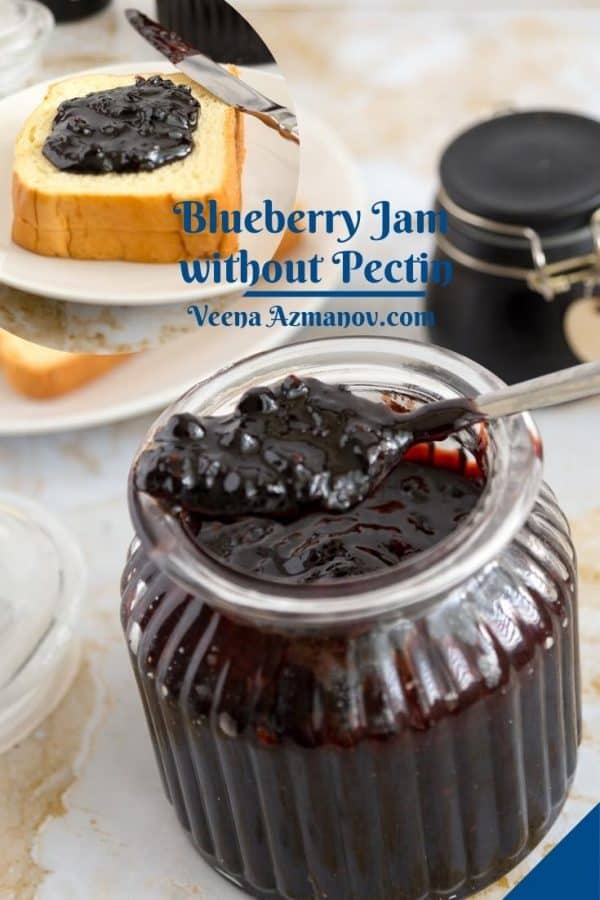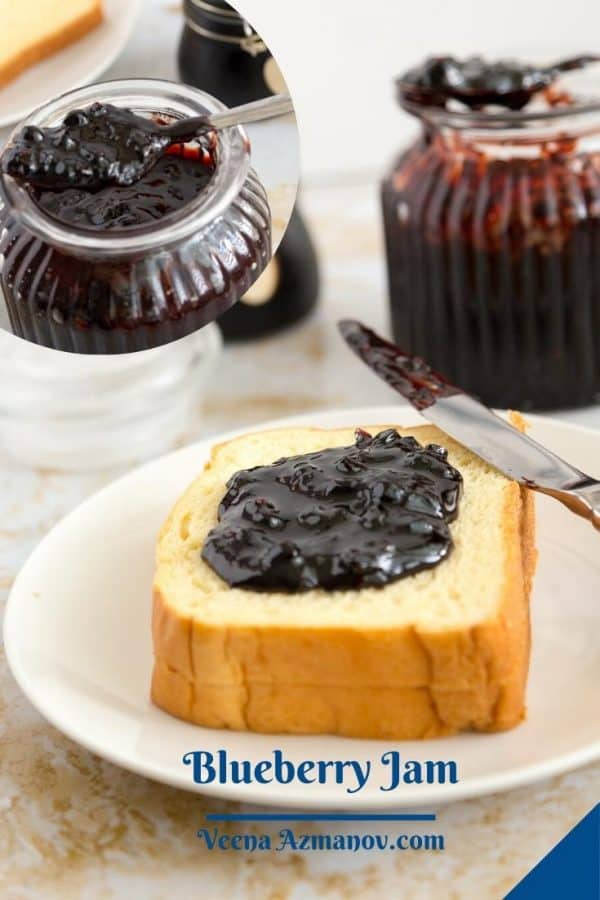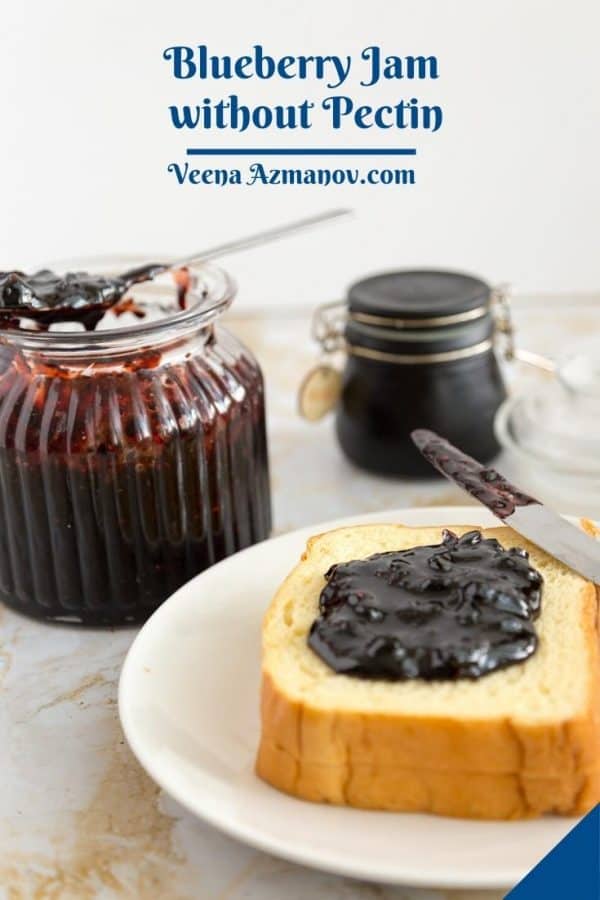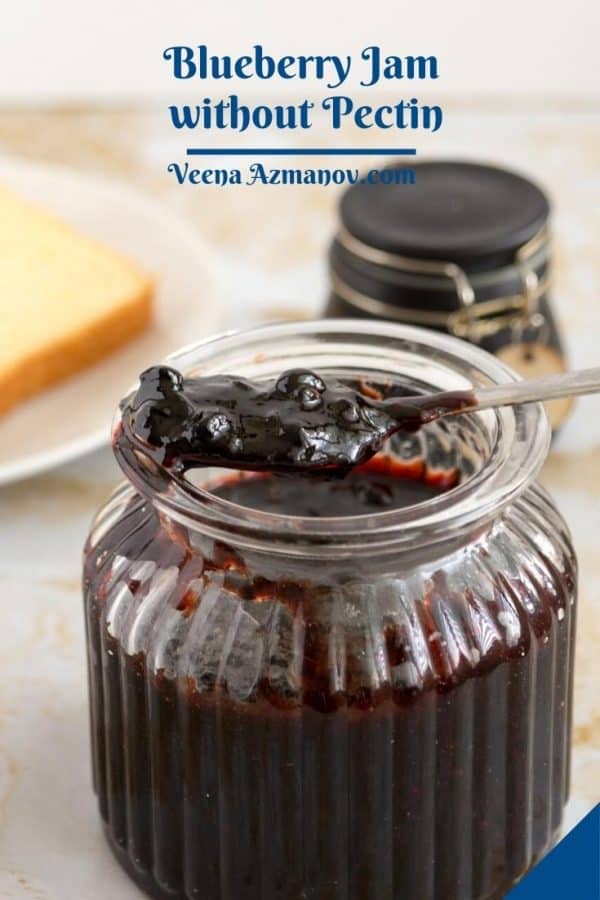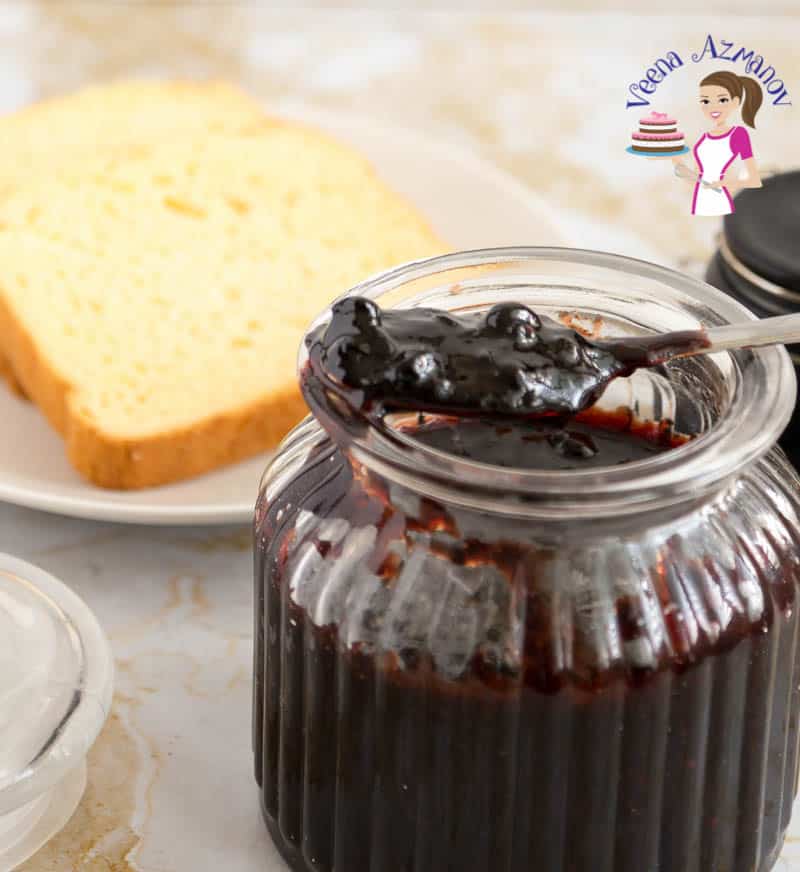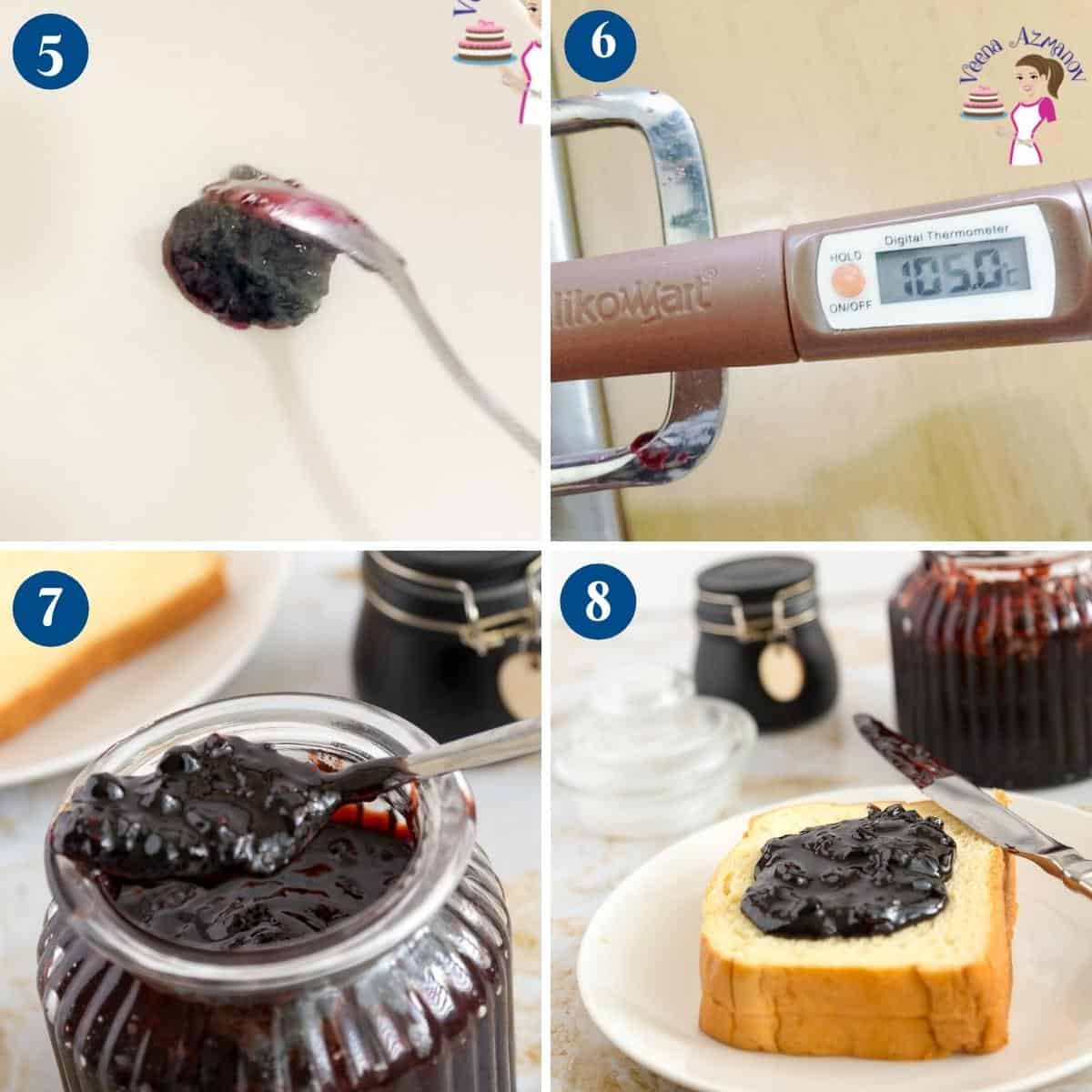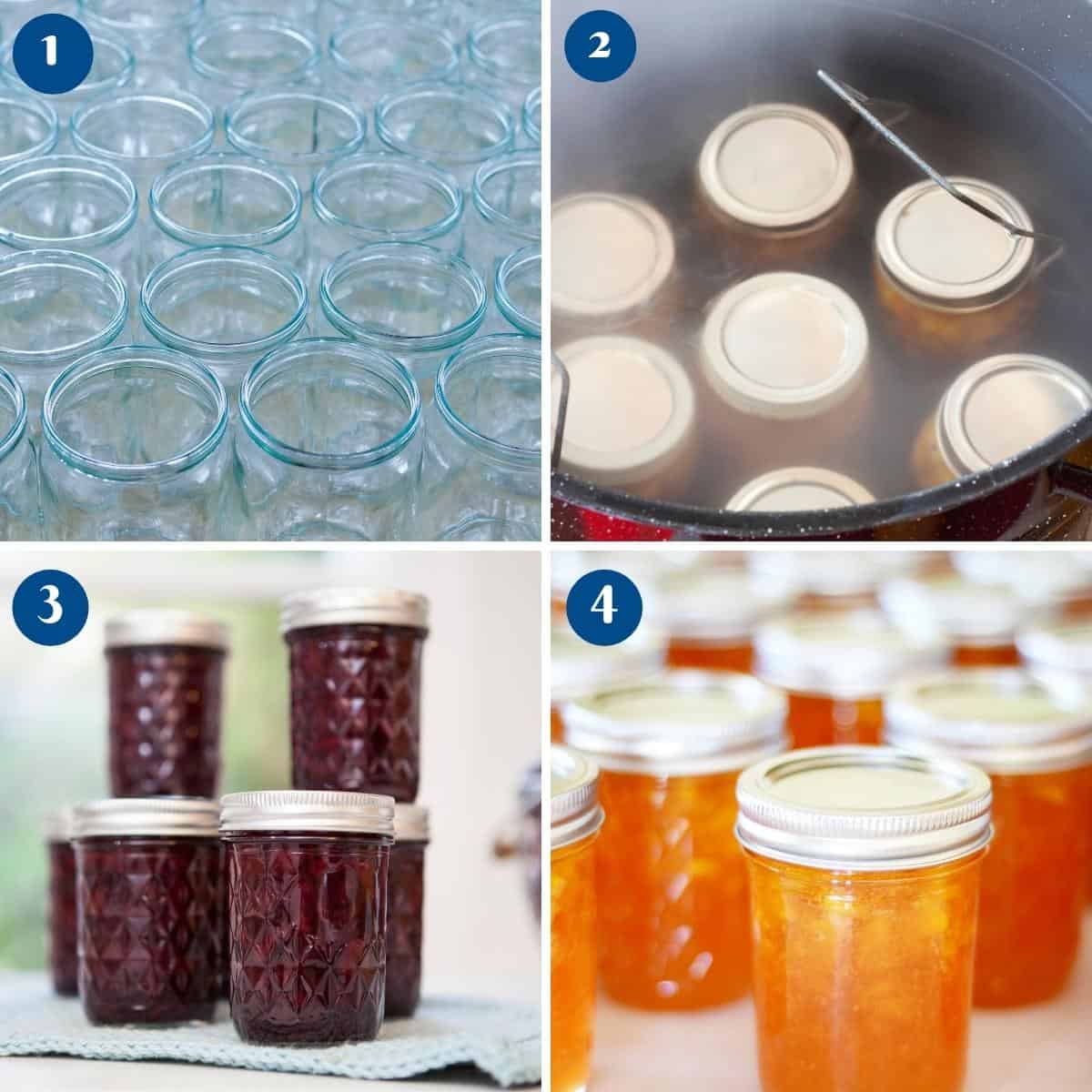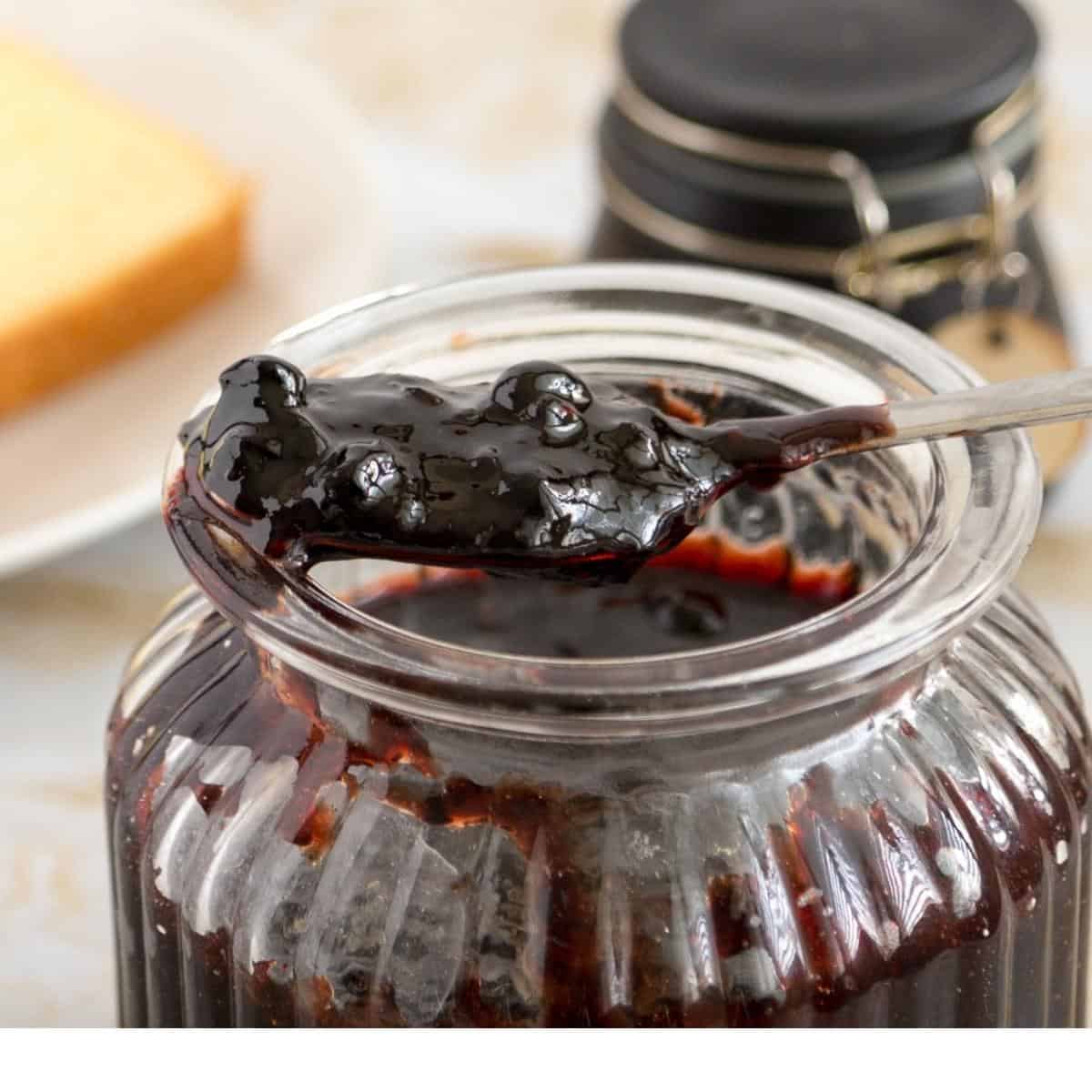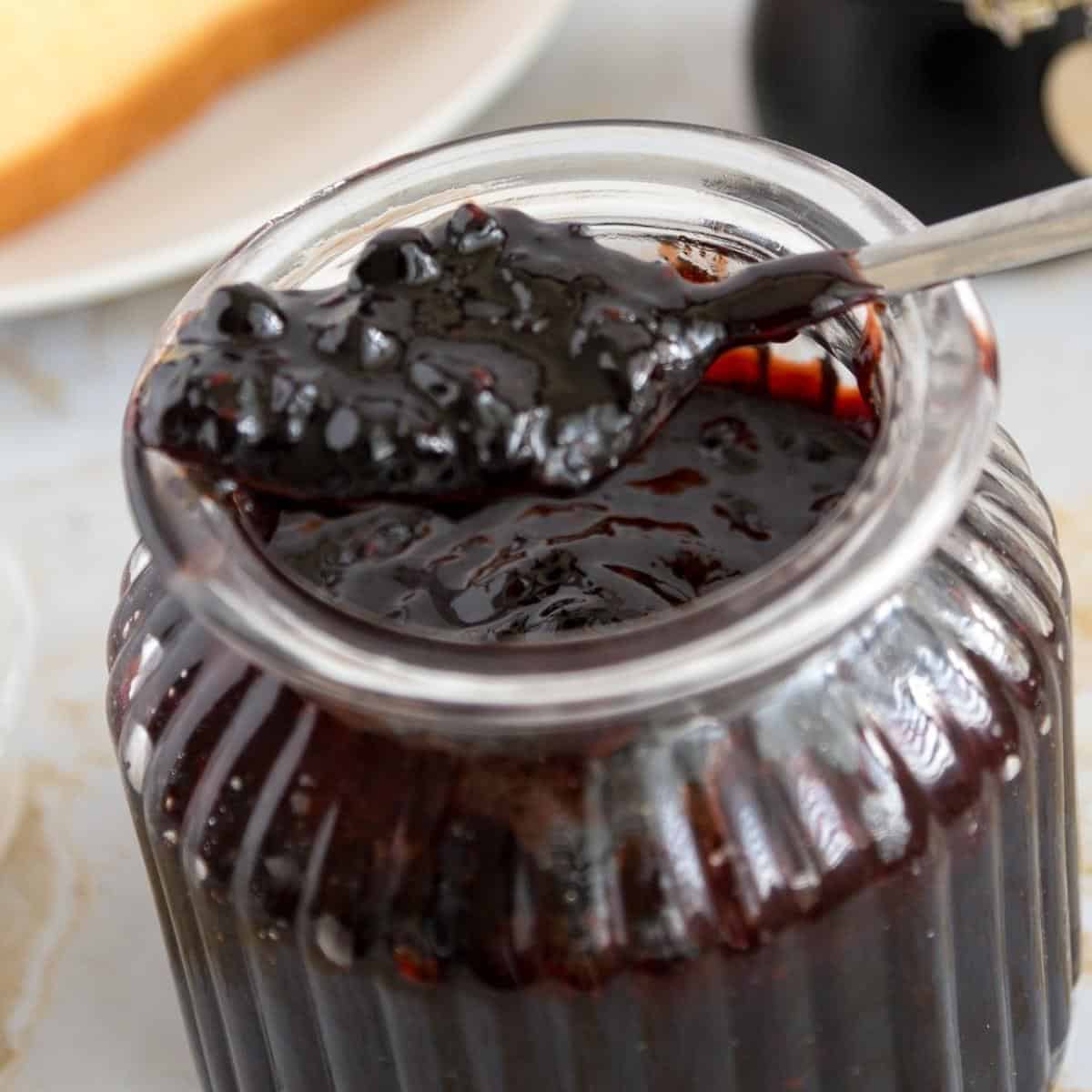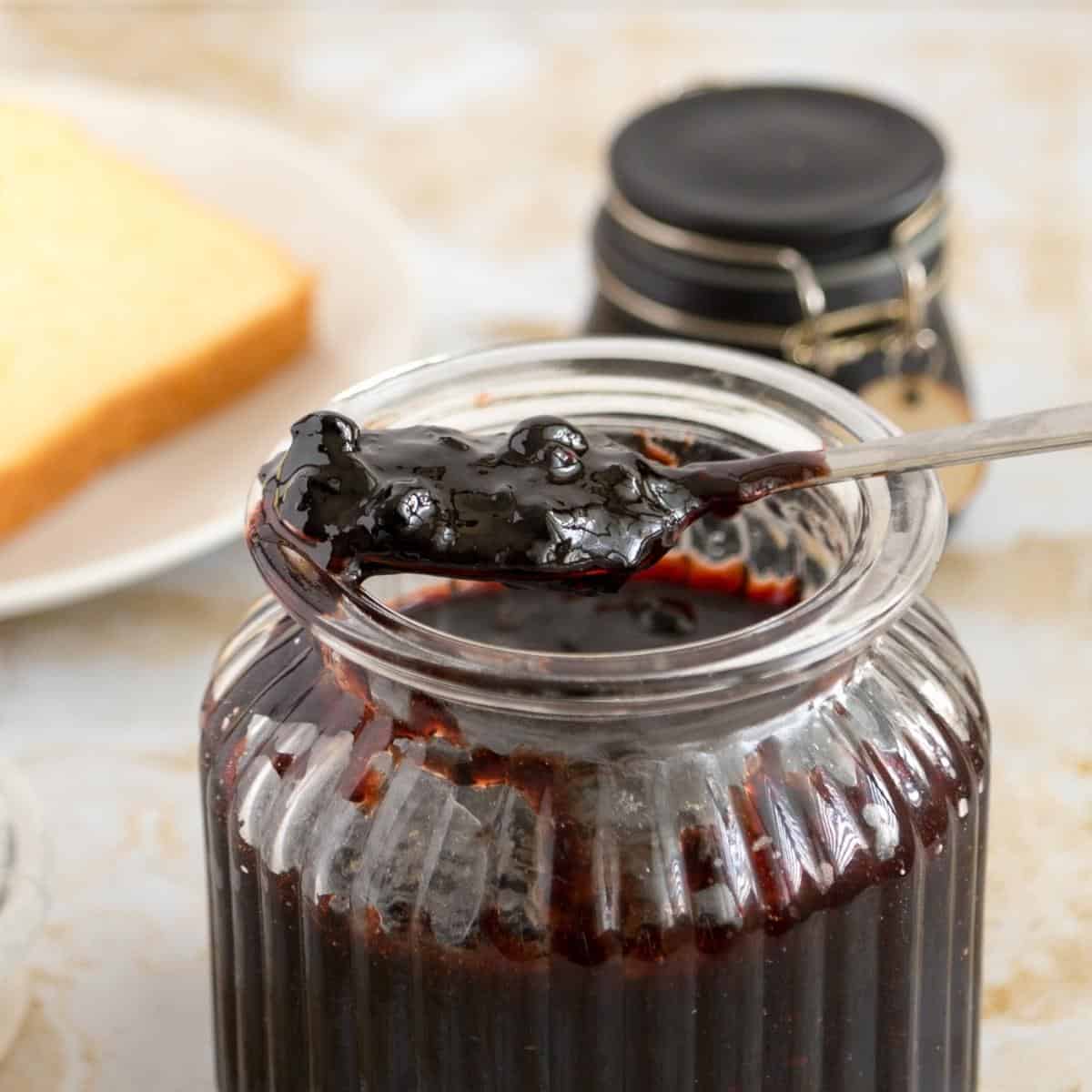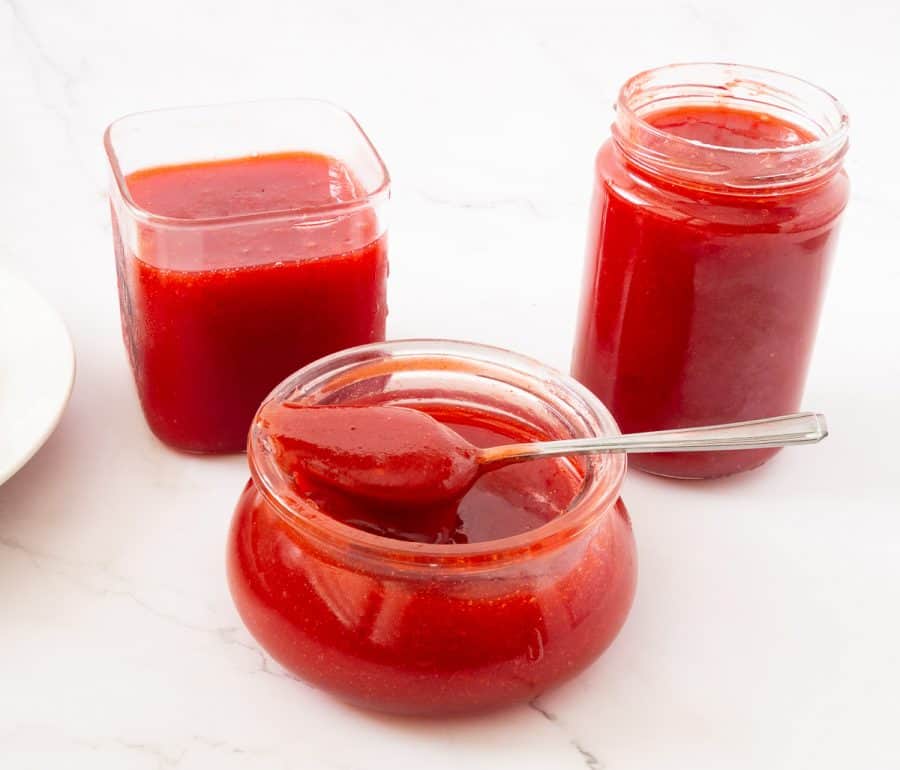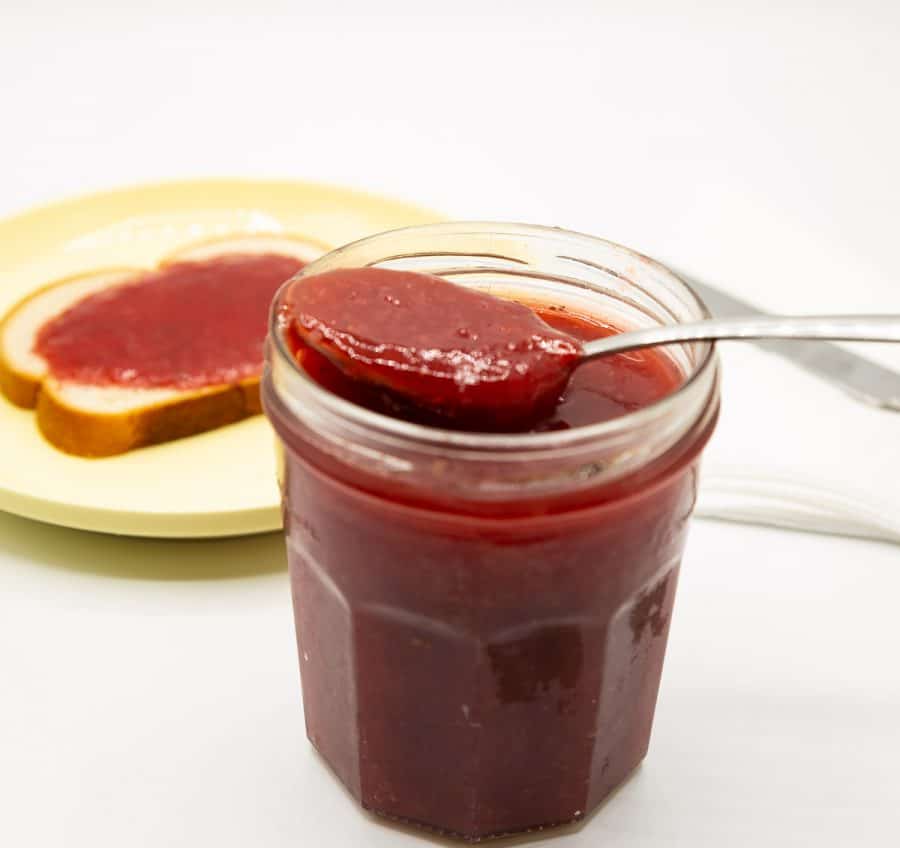I love fresh jams and love to try different flavors that are in season. This means you don’t need pints and pints of one fruit. So, instead of making many bottles of one fruit jam, I make many different fruit jams throughout the year. What could be better than tasting different jams on your toast, pancakes, or waffles? This works great for our family of four. First, the kids get variety, and it’s always nice to have fresh jam at home. So, when strawberries are in season, I make strawberry jam. During plum season, we make plum jam, fig jam, peach jam, and orange marmalade. I love each batch, no matter which fruit.
Why make this jam?
No-fail method – This recipe is simple and easy. And if you’ve never made homemade jam, you will definitely start now. No canning—This homemade recipe does not involve canning. You can just pour the jam into sterilized jars and store them in the fridge or freezer. However, I have also provided the detailed process for canning. And no added pectin – Ideally, you can make blueberry jam with just two ingredients: blueberries and sugar. Blueberries have natural acidity and pectin in abundance. And yet, adding lemon juice helps break down the skin. Low-sugar – Fresh blueberries are naturally soft and sweet, so you don’t need to add a lot of sugar to this jam.
Step-by-step: Blueberry jam recipe (no pectin)
Place two small ceramic plates in the freezer so we can test the jam later. Alternatively, you can use a candy thermometer to check the jam’s doneness. Check the blueberries and remove any bad, discolored, or bruised ones. Give them a quick wash and drain in a colander.Pro tip – Soft blueberries can be used, but discolored and bruised ones will ruin the jam. Also, don’t soak blueberries in water for too long, as they do soak up moisture. In a heavy bottom large pot or Dutch oven pan, combine the blueberries, sugar, salt, and lemon juice.Pro tip – If you use frozen berries, let them macerate in sugar and lemon juice for a few hours before cooking. This softens the blueberry skin considerably. Cook on medium heat until the sugar is dissolved. Then, turn the heat up and let the mixture come to a boil. Let it come to a full rolling boil for two minutes on medium-high.Pro tip – Boiling the jam is essential as it releases pectin from the skin and seeds in fruits. Then, turn the heat to medium-low. The jam should still be simmering but at a low simmer, not bubbling. Use a potato masher to mash the fruit – so you have a smoother, jam-like consistency.Pro tip – Mashing the fruit is optional. As it cooks, the fruit will break down into smaller chunks, similar to preserving. However, mashing will give it a smoother consistency, like jam. Continue to simmer for about 20 to 30 minutes more, stirring often so it does not stick to the bottom of the pan. As it cools, the jam will continue to thicken and deepen in color.Pro tip – The cooking time will depend on the quantity of the jam and the heat applied to it. It’s okay to cook a little longer, but there must be a simmer for the fruit to release pectin.
Testing the jam
Remove one of the ceramic plates from the freezer. Place a teaspoon of jam on the cold plate.Pro tip – The cold plate will help cool the jam almost instantly and give you a good indication if the jam is ready. Set aside for 2 to 3 minutes then test with your finger. Simply move/push the jam with your finger. If it wrinkles/crinkles it means the jam is ready. If not let the jam cook a couple of minutes more and test again.Pro tip – You may need to test the jam on a ceramic plate more than once or a couple of times depending on how early you start checking. Alternatively, you can use a candy thermometer – the jam should reach 105 C / 221 F.Pro tip – I find the thermometer to be the easiest and fail-proof method to check for doneness. Optional – Just when you are ready to take the jam off the heat, add a teaspoon of butter and stir well. Butter helps dissolve foam that accumulates on top of the jam.Pro tip – You don’t need more than 1 teaspoon of butter to help with the foam. It will also give you that glossy shine. Ladle the almost hot jam into sterilized jars leaving 1/4 inch space from the top. Use a clean sterilized knife or spatula to move the jam a bit – this will remove any air pockets, small air bubbles, or a large bubble. Wipe the rim with a clean cloth. Place a piece of wax paper on the top before you place the lid on tightly. Wipe jar rim of the jar with a clean paper towel. Top the lid.Alternatively, use the lid with screw-on rings that come with the canning jars.
The canning process (if you plan to can the jam)
Sterilize the jars
Sterilize 4 x 8 oz (250 g) jars by washing them in hot soapy water or cleaning them in the dishwasher with a gentle cycle. Then, place them in the oven for 20 minutes at a low 284 F / 140 C.Pro tip – I find the dishwasher does a good job of cleaning and the oven dries any excess moisture in the bottles. Note – Leave them in the oven until you are ready to use them (you can turn the oven off). Don’t forget to wash and sterilize the bottle lids as well.
Canning process
Place a rack in the bottom of a large stockpot or canner. Fill half the pot with water for a hot water bath. Bring the water in the pot to a boil on high heat. Lower the prepared jars over the rack leaving enough space between the jars.Pro tip – The level of water should be at least an inch above the top of the jars. So if necessary, pour more boiling water. Bring the water bath to a boil again. Cover the pot and process/simmer for 15 minutes. Then, carefully remove the jars from the stockpot and place them on a kitchen towel to absorb any excess moisture. Cool completely.Pro tip – The hot jars are very delicate so make sure to use tongs when taking them out and place them on soft towels to prevent them from breaking. Press the top of the lid to ensure the seal is tight – the lid should not move at all. Store in a cool dry place.
Storage
If canning, the canned jam will stay in a cool dry place in the pantry for up to a year or even longer. When not canned, the jam will stay at room temperature in an airtight container for a month or more in good weather. In about 24 hours you will notice that the jam will thicken considerably. You can also keep the jam in the fridge for 3 to 6 months. Label the jar with the name and date so you know what is in and when you made it.
Frequently asked questions
Did you LIKE this recipe? Save it for later. You can find my recipes on Pinterest. Follow me on Facebook, Twitter, and Instagram.Subscribe, and I’ll send you new recipes right to your inbox.
Blueberries –The best candidates for jam are blueberries with a deep, rich color. Ripe but firm, discard blueberries that are too soft or bruised. Pro tip – Never let the blueberries soak in water, as the skin absorbs water and becomes tough. If you find the blueberry skins tough (some suppliers prewash them), combine the sugar, lemon juice, and blueberries in a glass or plastic container and let it stay in the fridge overnight. Letting the fruit macerate in sugar and lemon juice helps soften the skin. Sugar – Unlike commercial jams, I like to use less sugar, usually half the quantity of fruit. If I have 1 kg of fruit, I typically add 500 grams of sugar. So my jam is more fruity rather than just sugary sweet. But if you like it sweet, you can add more. Most commercial jams are made with ¾ grams of sugar, in this case 750 grams. Lemon juice – It’s best to use fresh lemon juice. You can also add zest, but I’m not a big fan of zest in my blueberry jam. Butter – Now you don’t really need butter, and yet, if you notice, often there is foam in the jam when cooking. Adding butter helps clarify the jam – foam comes to the surface, so you can skim it off easily.
First, pick the naturally sweetest raspberries you can find from the market. Forget everything you read about pectin and buy a box of natural pectin. These are available in most supermarkets. If you don’t want to use pectin, you can use chia seeds. The difference is that jam with pectin has a longer shelf life than with chia seeds. Also, grab some fresh lemon juice because that has some natural pectin in it, too. The formula is pretty simple, and it belongs to my mom If you ever need to add more sweetness, add a little agave syrup or honey to the jam just before you take it off the heat. This will sweeten it a bit. I used to make no-sugar jams for a friend of my mom long ago because she was diabetic. She loved the jam, so she enjoyed it for breakfast every day.
Fresh Fig Jam – No Pectin (just 3 ingredients) Microwave Strawberry Jam – No Pectin Old Fashioned Raspberry Jam – No Pectin See all jam recipes
Thank you for sharing - Save for later
